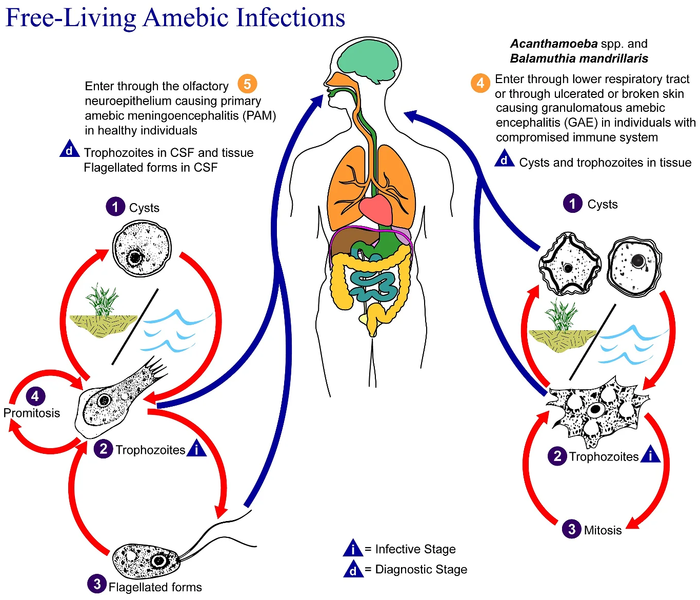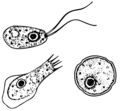Fichier:Free-living amebic infections.png

Taille de cet aperçu : 700 × 600 pixels. Autres résolutions : 280 × 240 pixels | 560 × 480 pixels | 896 × 768 pixels | 1 195 × 1 024 pixels | 1 365 × 1 170 pixels.
Fichier d’origine (1 365 × 1 170 pixels, taille du fichier : 715 kio, type MIME : image/png)
Historique du fichier
Cliquer sur une date et heure pour voir le fichier tel qu'il était à ce moment-là.
| Date et heure | Vignette | Dimensions | Utilisateur | Commentaire | |
|---|---|---|---|---|---|
| actuel | 2 février 2023 à 11:24 |  | 1 365 × 1 170 (715 kio) | Materialscientist | https://answersingenesis.org/biology/microbiology/the-genesis-of-brain-eating-amoeba/ |
| 20 juillet 2008 à 08:30 |  | 518 × 435 (31 kio) | Optigan13 | {{Information |Description={{en|This is an illustration of the life cycle of the parasitic agents responsible for causing “free-living” amebic infections. For a complete description of the life cycle of these parasites, select the link below the image |
Utilisation du fichier
La page suivante utilise ce fichier :
Usage global du fichier
Les autres wikis suivants utilisent ce fichier :
- Utilisation sur de.wikibooks.org
- Utilisation sur en.wiktionary.org
- Utilisation sur fi.wikipedia.org
- Utilisation sur gl.wikipedia.org
- Utilisation sur hr.wikipedia.org
- Utilisation sur is.wikipedia.org
- Utilisation sur it.wikipedia.org
- Utilisation sur pl.wikipedia.org
- Utilisation sur te.wikipedia.org
- Utilisation sur vi.wikipedia.org
- Utilisation sur www.wikidata.org
- Utilisation sur zh.wikipedia.org




